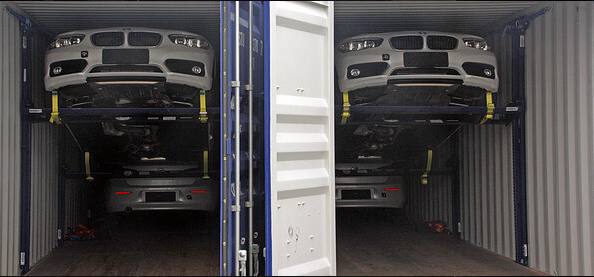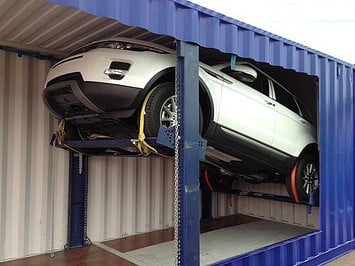
There are many myths concerning the value of containerised transport for vehicles. However, in the last decade technologies have changed. Many of the old issues relating to containerised car transport have long been extinguished, meaning that this cost-effective and speedy option is now viable for the automotive industry. Here are some of the traditional misconceptions - and the 21st Century solutions.
1) Containerised Transport Damages Cars
In the 1990s, you’d be right. Traditional container transportation used wooden racks. These were prone to cracking, splintering, and shifting during transit. This is unsurprising - thin planks of rough pine or plywood are not designed to cope with the weight of a vehicle, and wooden racks were not constructed with the shape of cars in mind.
Thankfully, today’s racking systems are entirely different. Purpose-built, ergonomically designed, and made from high-quality super-strength steel, cars are as safe in a metal rack as they are on a transport lorry. In fact, racking systems are so successful that they have a 100% safety record when used correctly – a much higher figure than roll-on-roll-off (RoRo) ferries.
2) It’s More Expensive To Ship Cars By Container
The maths on this one can be a little complex. That’s because different ports have different fees, and prices can fluctuate in line with fuel economics. However, containerised shipping always wins in terms of long-term investment. For instance, four cars can be shipped with the R-RAK, which dramatically cuts import fees, and each rack has a lifetime use of at least seven years. This means that the savings accumulate very swiftly. Container ships also have access to more ports than their RoRo cousins, meaning that more cost-effective routes are available.
3) Containerised Transport Takes Longer
The world has many established RoRo routes that car manufacturers have always used. These are like ancient A-roads of the sea, and have been reliable arteries for decades. However, like ancient A-roads, they are never as fast or reliable as the newer infrastructure. Container transport – the motorways of the sea - is not only the fastest way to get from A to B, China’s ‘Belt-and-Road’ initiative is forcing it into a position of global dominance. New ports, railways, and roads are being built specifically with containerised transport in mind, transforming the oceans into a global container superhighway. This means that container shipping has a distinct competitive advantage over alternative methodologies.
4) Loading & Unloading Takes Too Long
RoRo ferries have fairly cumbersome loading systems. Cars are driven onto the vessel and are parked as if in a car-park. They then need to be individually secured. This process needs to be repeated every time the vehicles change ships, which adds up to a significant chunk of lost time. Container transport is very swift, although the process is a bit different. There are various types of rack, which are designed for different types of vehicle. However, they all follow the same principle of positioning and securing the car and then hoisting it into place. The container is then locked, and no more labour is required until unloading. Shipping infrastructure is optimised for container transport, so once loaded, the products move rapidly.
What Next?
If you have questions about containerised car transport solutions, Trans Rak is happy to answer them. Call us on 01926 40 82 82 or download our Containerised Car Transport Guide to find out more.















